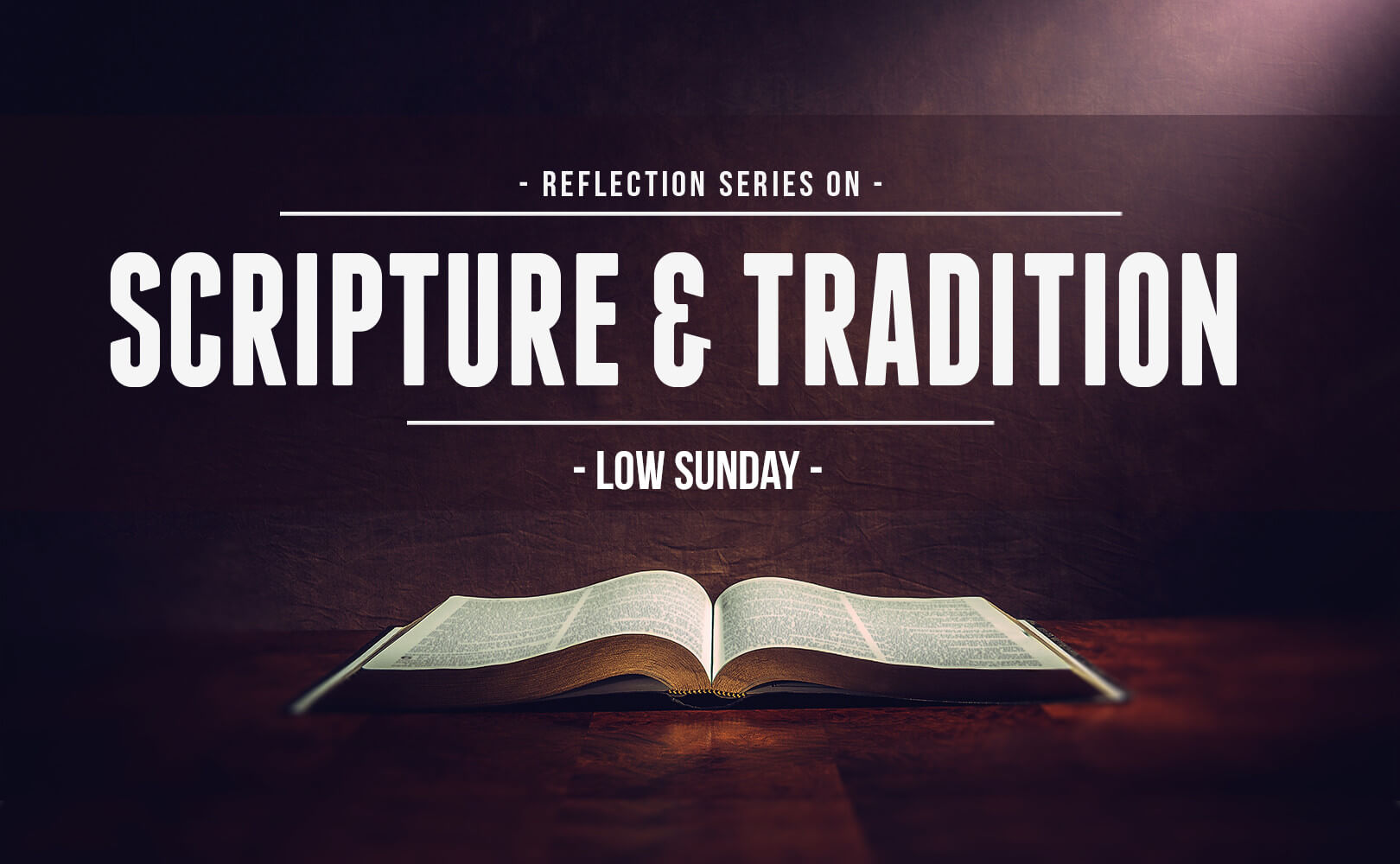Epistle: 1 John 5:4-10
Gospel: John 20:19-31
Grant, we beseech Thee, Almighty God, that we who have completed the Easter holy days, may, through Thy imparting, retain these effects in our ways and our life.
– From the Collect for Low Sunday
This Sunday could be called the Sunday of Many Names. Along with Low Sunday, other names for the day include Thomas Sunday, Quasimodo Sunday, The Second Sunday of Easter, Divine Mercy Sunday, and the Octave Day of Easter. Some of these names are more recent in usage, but no matter the name, the Scriptural focus of this Sunday is the encounter of St. Thomas the Apostle with the Risen Lord.
The Gospel of St. John tells us, “And after eight days, again his disciples were within, and Thomas with them.” The reason St. Thomas is pointed out is because he missed the meeting with the Risen Christ on Easter, and he disbelieved the Apostles’ account. The eighth day, then, is the Sunday after Easter, which is why the Church continues to celebrate this encounter the Sunday after Easter Sunday. St. John Chrysostom asks why Christ waited eight days until he appeared to St. Thomas: “He does so in order that, in the meantime, being continually instructed by the disciples and hearing the same thing repeated, he might be inflamed with more eager desire and be more ready to believe for the future” (Homilies on the Gospel of John 87.1).
Imagine that week for St. Thomas. All the other Apostles are reveling in the fact of the Resurrection, yet he continues to question their account. By the end of the week, both his doubt and excitement has grown: as the days pass without encountering the Risen Christ, he continues to doubt, but as the Apostles speak more about it, he anxiously hopes they are right.
Then, eight days later, He appears.
The weeklong build-up leads to the climax of St. John’s Gospel: St. Thomas’s declaration to Christ, “My Lord and my God!” Often Christ hid his divinity during his public ministry, knowing that many would misunderstand what it meant. After his Resurrection, though, Christ allows St. Thomas to worship him openly. For this is St. John’s purpose in his Gospel: to proclaim the divinity of Jesus Christ. And as is usual with God, it is a flawed instrument who proclaims it. “Doubting Thomas,” who questioned the testimony of his fellow Apostles, is the one who fully and publicly embraces the significance of the Resurrection. Jesus is God!
Another name for this Sunday—Quasimodo Sunday—points us to the day’s Epistle. The name comes from the first two words in the introit: “Quasi modo geniti infantes” (“As newborn babes”). In the First Letter of St. John, the apostle writes, “For whatsoever is born of God overcometh the world.” Just as Christ overcame death, so we too who are “born of God” can overcome the world’s great evil, death. But how is it that we are “born of God?”
St. John tells us, “he that came by water and blood, Jesus Christ: not by water only but by water and blood. And it is the Spirit which testifieth that Christ is the truth…there are three that give testimony on earth: the spirit and the water and the blood.” It is therefore through water (Baptism), the spirit (Confirmation), and blood (the Eucharist)—the three Sacraments of Initiation in which one becomes a full member of Christ’s Body, the Church—that we are born of God and can overcome the world. This reading is appropriate for the day, as in the ancient Church it was at the Easter Vigil that the catechumens received these three great Sacraments—they were truly “newborn babes.” Eight days later, this reading reminds them of what they have entered into, and the power of these Sacraments. No longer should they fear the world, or even death, for now they have been born of God.
Today we too who have received these Sacraments need not fear the world. Although the world hates us (cf. John 15:18), Christ has overcome the world, and so we who have become part of Christ’s body have overcome it as well. It may not always look like it—and in fact it rarely does look like it—but as long as we are faithful to Christ, we cannot be defeated. When Christ reconciles all things at the End of Time and establishes his everlasting Kingdom as Lord and God, we who are part of his Body will reign with him.


